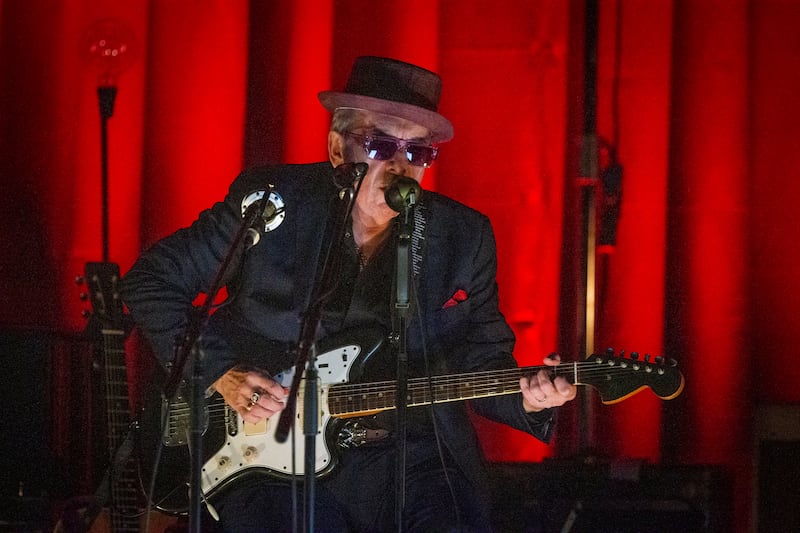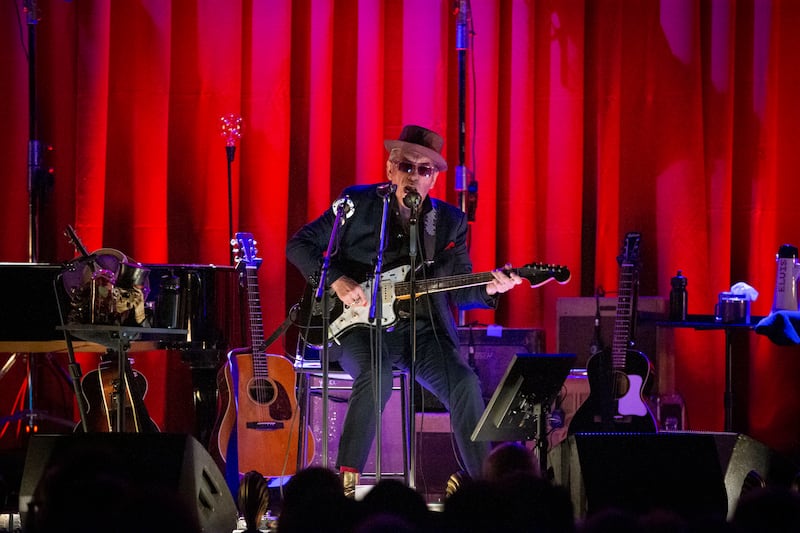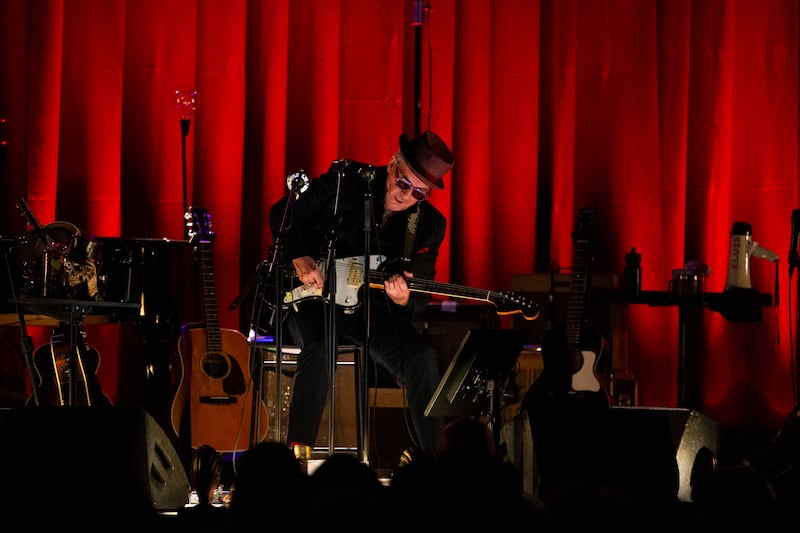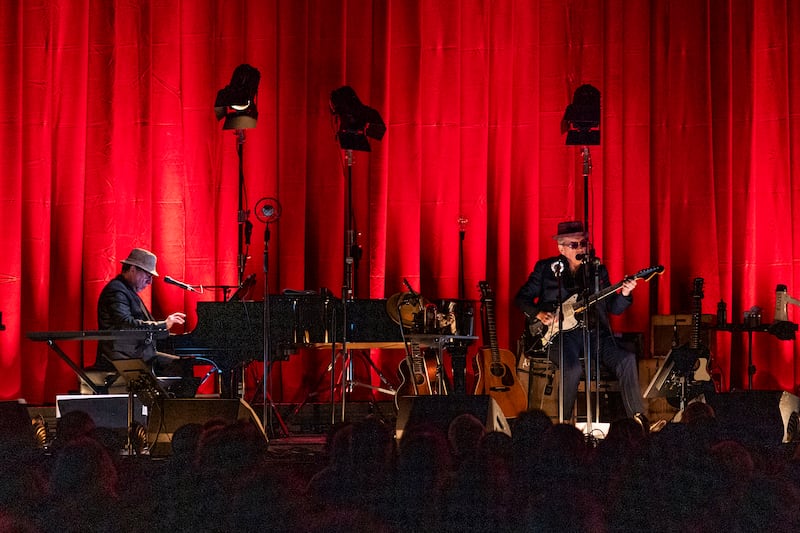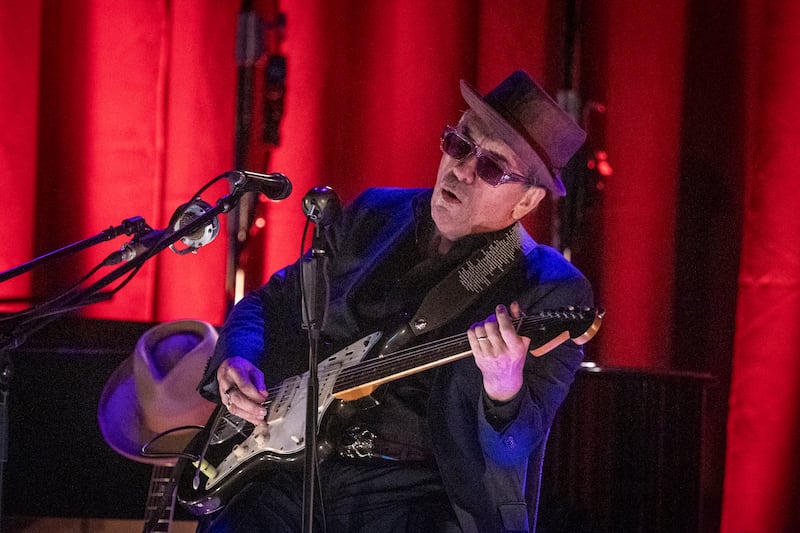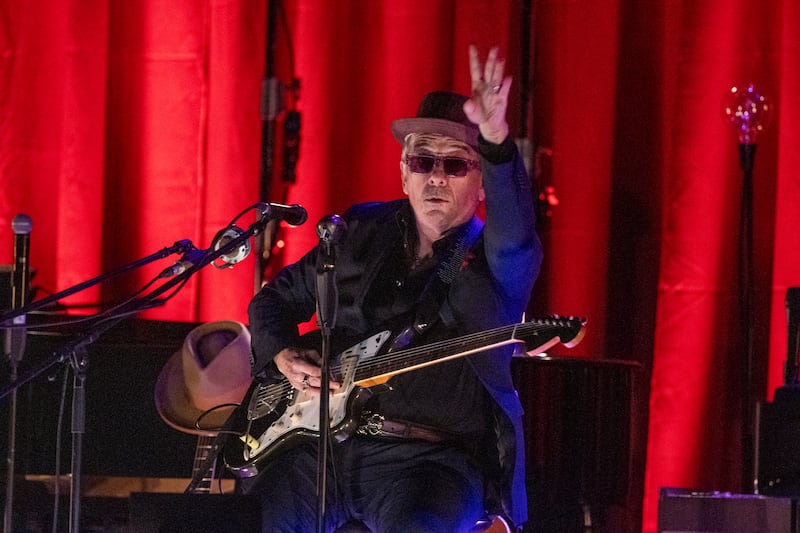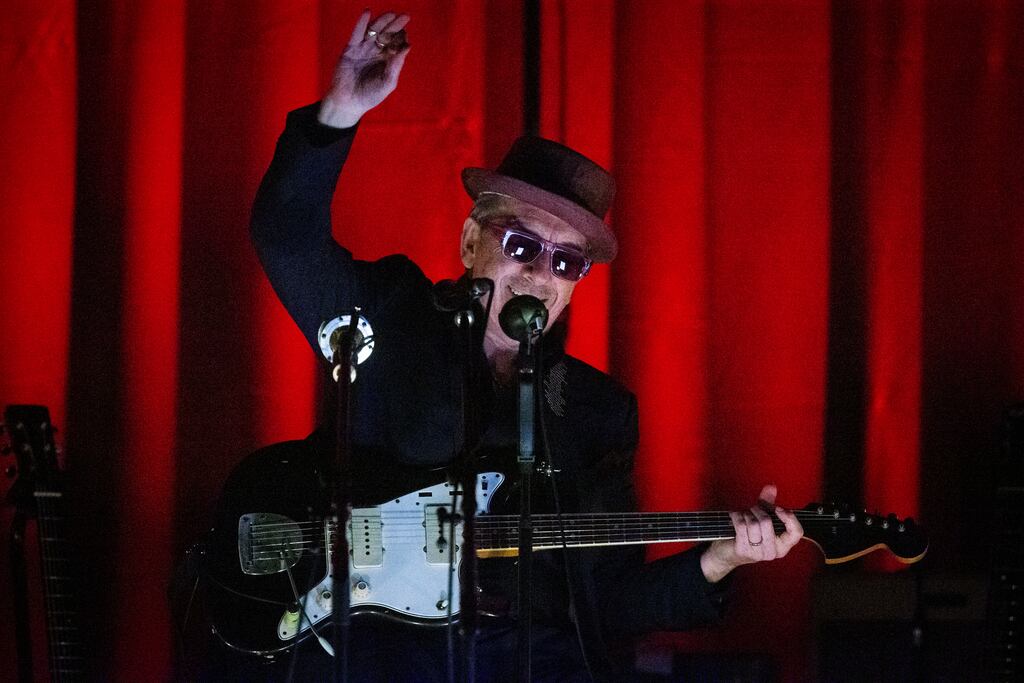Elvis Costello & Steve Nieve
Vicar Street, Dublin
★★★★☆
“I’m hard to kill,” Declan Patrick McManus – aka Elvis Costello – wryly states, even though later in the evening, a rogue microphone lead threatens to. Tonight Costello and his long-time collaborator Steve Nieve are in spry, vital form on the first night of four dates at Vicar Street, Dublin. The stage design is set for a 1960s revue, with red curtains and soft lighting, which Costello inhabits with ease, going from mic to mic, speaking to a career that spans over 50 years, 25 records, and a myriad of collaborations.
Intimacy is the watchword, as he takes us on a journey that partly begins with “kidnapping” Steve Nieve from London’s Royal College of Music when he was 18, folding in anecdotes about Budd Schulberg, “Cold War topicality” and Burt Bacharach.
When I Was Cruel No. 2 sets the tone-spare and sincere, with a fleck of playfulness and an interpolation of Abba’s Dancing Queen, an approach that repeats later in Clubland with its nod to The Specials Ghost Town, reminding us of Nieve and Costello’s deep sense of musical history, and on something such as (I Don’t Want To Go To) Chelsea, Nieve is astonishing, like the ghost of George Gershwin being watched over by Philip Glass.
At times beats are contributed by Apollo Ray, who lingers watchfully at the side of the stage, but the focus is on Costello and Nieve, who survey 20 songs over a two-hour period with a lightness of spirit amid world-weariness. At one point Costello wistfully states he “never thought” he would come back to Ireland, suggesting that this is also about laying ghosts to rest as well as conjuring them.
READ MORE
The rearrangements are inventive, from (The Angels Wanna Wear My) Red Shoes to Newspaper Pane, and for every song that sets the crowd off, such as Oliver’s Army (which Costello stops to explain its “problematic” nature), there is A Face in the Crowd, a flooring song from his recent soundtrack to the musical of the same name.
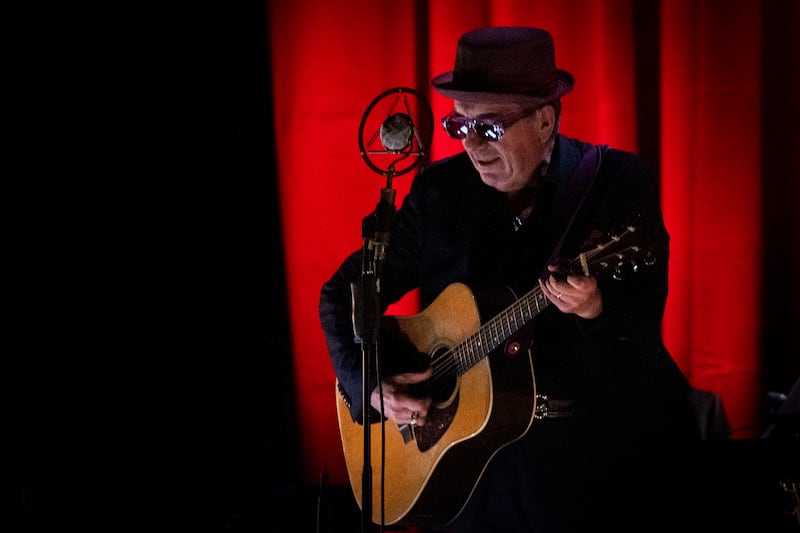
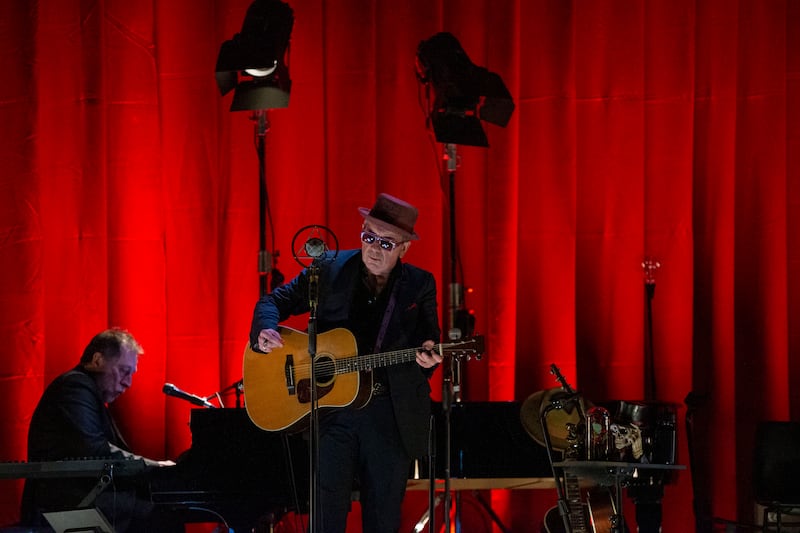
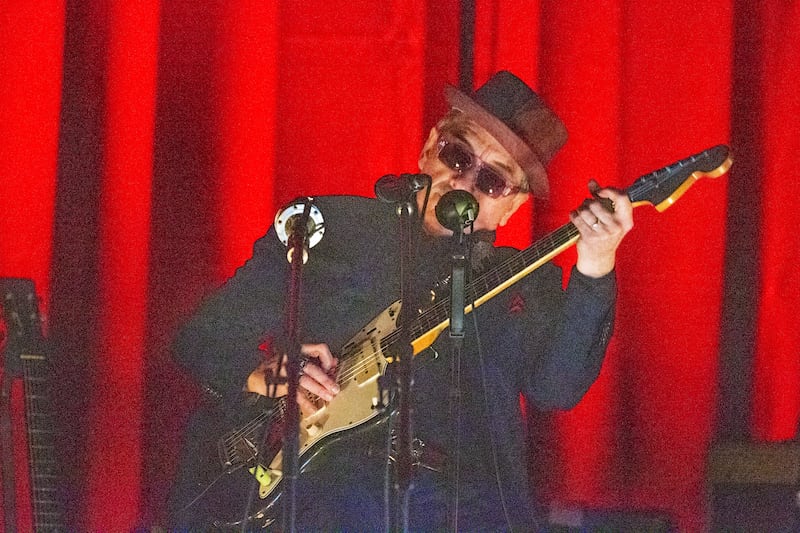
Motel Matches is prefaced with a story about Costello’s night at a motel where he heard Sam Cooke had been murdered – “an innocent abroad” – he became convinced that Cooke was talking to him through the air conditioner. Such stories pepper the concert, from tales of wrestler Mick McManus (which inspired The Man You Love to Hate), to stumbling on a themed series of 45s which takes us to a rowdy version of My Baby Just Purrs (You’re Mine, Not Hers).
Costello leans on a rich oral tradition and given that a few of his most well-known songs are covers, She, I Can’t Stand Up for Falling Down, and (What’s So Funny ‘Bout) Peace, Love, and Understanding, it is testament to how much of a conduit he can be. There are references to ragtime, vaudeville, jazz and rock’n’roll, but this is not pastiche, it is a serious surveying of foundation stones. The Death of Magic Thinking is something Costello rues, but by the time we get to Shipbuilding and its sad, spooky undertone, he deftly reminds us that history perhaps doesn’t exactly repeat itself, but often rhymes, to parse the aphorism.
